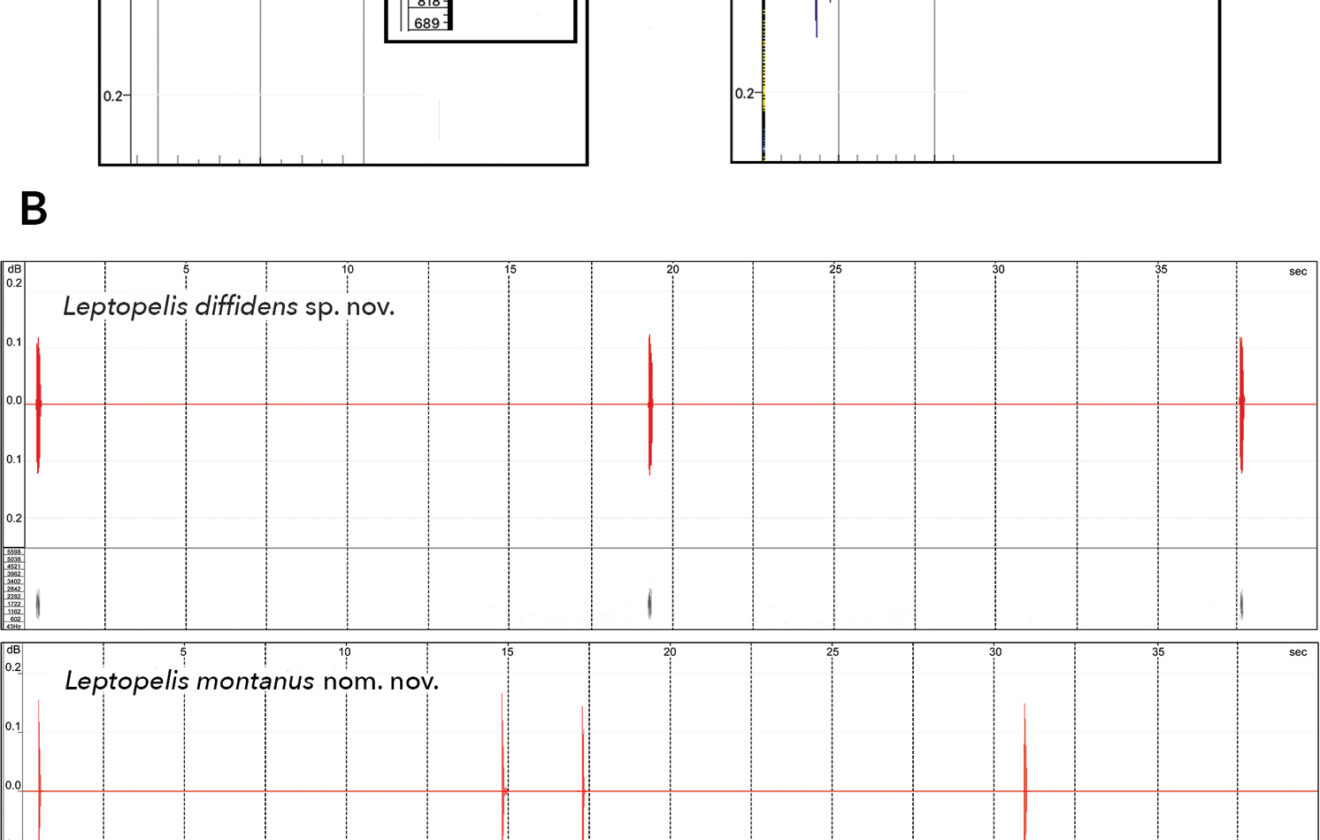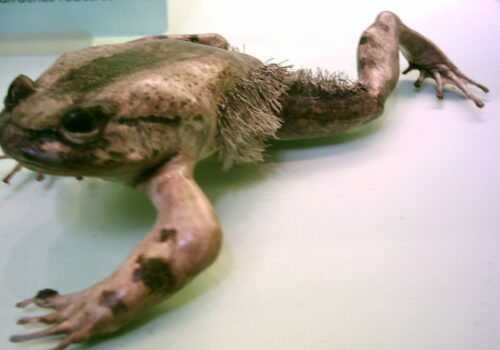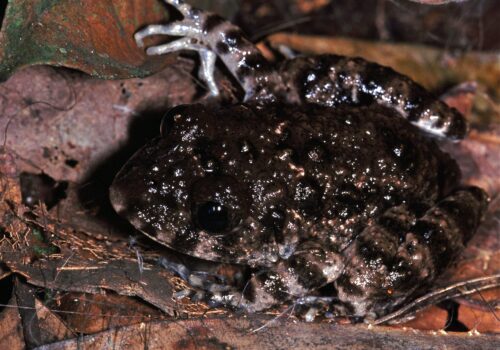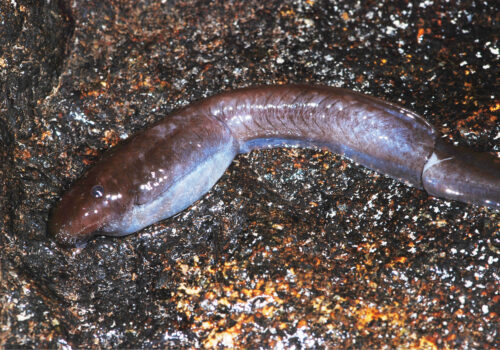- Secrets of Ethiopia's Remarkable Tree Frog: Exploring the Life of Leptopelis ragazzii
- Taxonomy and Classification: A Jewel in the Leptopelis Crown
- Natural Habitat: Mist-Shrouded Realms of the Ethiopian Highlands
- Physical Characteristics: Elegant Adaptations for Arboreal Life
- Behavior and Life Cycle: Nighttime Music in the Highlands
- Ecological Role: Guardians Within the Ethiopian Canopy
- Threats and Conservation Status: Facing an Uncertain Future
- Cultural and Scientific Significance
- Conclusion: Preserving Ethiopia’s Arboreal Jewel
Secrets of Ethiopia’s Remarkable Tree Frog: Exploring the Life of Leptopelis ragazzii#
The dense evergreen canopy rustles gently beneath the Ethiopian twilight, shadows weaving silently from branch to branch. In this twilight realm of moisture-laden leaves, swirling mist, and symphonic calls of nocturnal creatures, one amphibian emerges from its daytime hideaway—a frog whose emerald-tinted eyes, delicate yet agile limbs, and distinctive vocalization enchant biologists and nature enthusiasts alike. This ethereal inhabitant of East African montane forests bears the intriguing name: Leptopelis ragazzii.
Commonly known as Ragazzi’s Tree Frog, this amphibian encapsulates a story both ancient and contemporary; its roots delve deeply into Africa’s evolutionary past, yet today, the species faces modern challenges that put its delicate future at risk. From its sophisticated adaptability to the ecosystems depending on its presence, every aspect of the life of Leptopelis ragazzii offers lessons about biodiversity, ecosystem health, and our role in preserving our shared natural heritage. Join us as we delve beneath the glossy leaves into a story as immersive, fascinating, and beautiful as the frog itself.
Taxonomy and Classification: A Jewel in the Leptopelis Crown#
Ragazzi’s Tree Frog belongs to the family Arthroleptidae, a diverse and fascinating group of frogs inhabiting sub-Saharan Africa. This family is famed for its ecological diversity and includes terrestrial, arboreal, and aquatic species. Within Arthroleptidae, the genus Leptopelis stands apart, characterized by its arboreal tendencies, melodious mating calls, and distinctive reproductive behaviors.
Officially described by herpetologist George Albert Boulenger in 1896, Leptopelis ragazzii honors the Italian explorer Vincenzo Ragazzi, who first collected specimens during expeditions in Ethiopia. Closely related species include Leptopelis vannutellii and Leptopelis gramineus, which bear resemblances in morphology and behavior, though each species retains unique evolutionary nuances that distinguish them clearly from their close relatives.
Natural Habitat: Mist-Shrouded Realms of the Ethiopian Highlands#
Leptopelis ragazzii is found primarily in Ethiopia, and its habitat preferences exemplify the intricate natural balancing acts characteristic of mountainous ecosystems. Preferring altitudes between approximately 1,900 to 3,100 meters above sea level, this arboreal beauty thrives within montane rainforests, evergreens, and lush wooded grasslands found along the Ethiopian highlands’ long undulating ridges.
These montane forests are characterized by regular rainfall, cool temperatures, rich organic soils, and dense understory foliage. Such conditions not only provide ideal refuge but also support diverse insect populations—the abundant prey upon which Ragazzi’s Tree Frogs depend. Although they prefer canopies and branches, the frogs sometimes venture closer to the forest floor and inhabit transitional areas between mature forest stands and open grassland zones during humid conditions.
The suitability of this habitat is intricately tied to the frog’s delicate skin that requires high moisture content, making these montane forests invaluable central habitats. Local climate stability and humidity provided by the tree canopies form microenvironments that sustain these frogs—a beautiful illustration of how specific organisms become finely attuned to their surroundings through millions of years of evolutionary refinement.
Physical Characteristics: Elegant Adaptations for Arboreal Life#
If you’ve ever glimpsed Ragazzi’s Tree Frog illuminated in torchlight on a leafy branch, your first impression would undoubtedly center on its striking and graceful appearance. Adults typically measure about 30 to 45 mm, males slightly smaller than females. Their eyes, large, round, protruding, and vividly emerald-green, offer stunning visual contrast set against their elegantly streamlined bodies.
Coloration varies slightly but commonly shifts along shades of green, olive, to brownish hues, allowing perfect camouflage amongst the mossy foliage and mottled branches of their tree canopy homes. A subtle marbling of darker patterns often adorns their smooth backs, blending seamlessly with surrounding vegetation. The underside of the frog frequently displays lighter shades of cream or off-white, facilitating further camouflage from misleading perspectives below.
Ragazzi’s Tree Frog limbs exhibit long, slender digits terminating in adhesive discs—a wonderful adaptation enabling extraordinary arboreal agility. These specialized toe-pads allow the species to climb effortlessly onto glossy, rain-slick leaves or cling securely upside-down beneath branches, places where many predators cannot access.
Behavior and Life Cycle: Nighttime Music in the Highlands#
Masters of Ambush and Efficiency#
As twilight envelops the highland forest, Ragazzi’s Tree Frogs awaken and begin their nocturnal foray in search of sustenance. Primarily insectivorous, these amphibians set ambushes atop leaves and along branches, silently awaiting airborne prey including moths, insects, beetles, and occasionally arachnids. Their swift, protrusible tongues snatch food within a fraction of a second, showcasing evolutionary perfection as efficient predators in their arboreal habitats.
A Calling Chorus for Courtship#
The enigmatic beauty of Ragazzi’s Tree Frogs extends beyond impressive physical adaptation; it finds expression through their enchanting mating calls. Male frogs vocalize exquisite, melodious chirps resonant through the moist evening air to attract females. Often these choruses initiate immediately after rainfall, creating a living symphony erupting through the trees beneath starlit Ethiopian skies.
Females, drawn to stronger and clearer vocalizations, select potential partners and descend closer to freshwater pools or temporary rainwater puddles to engage in amplexus (a gentle grasp from the male atop the female), which precedes egg-laying. The eggs, carefully deposited in water or localized damp environments, hatch into aquatic tadpoles that later metamorphose into juvenile frogs, gradually adapting to the arboreal lifestyle throughout their development.
Ecological Role: Guardians Within the Ethiopian Canopy#
Beyond their individual beauty and captivating behaviors, Leptopelis ragazzii embodies an indispensable relational thread within the greater ecosystem fabric. As voracious hunters of nocturnal insects, these frogs provide natural pest control, helping regulate insect populations. Through their interaction within trophic webs, they nourish diverse forest-dwelling predators, including certain snakes, birds, and mammals reliant on them as food. Thus, Leptopelis ragazzii maintains delicate balance, illustrating how nature is interwoven through intricate linkages reinforced by each species’ presence and activity.
Moreover, amphibians, including Ragazzi’s Tree Frogs, serve importantly as bioindicators whose populations reflect broader habitat health and permanence. Their sensitivity toward habitat changes warns biologists about potential ecosystem disturbances long before these disruptions become widely observable within more resilient species populations.
Threats and Conservation Status: Facing an Uncertain Future#
Despite a current conservation classification by the IUCN Red List of ‘Least Concern,’ Ragazzi’s Tree Frog faces threats looming increasingly closer to its forested refuge. Primary dangers hinge around habitat destruction from agricultural expansion, deforestation for fuelwood, logging, urbanization, and the impacts exacerbated by climate change—alterations to rainfall patterns, temperature fluctuations, and drought affecting highland Montane ecosystems profoundly.
Though populations remain relatively robust, continued assessment and proactive habitat protection strategies are essential. Efforts by local conservation groups, national parks such as Bale Mountains National Park, and public ecological education initiatives emphasize not only the importance of preserving Ragazzi’s Tree Frogs but entire montane-forest-dependent ecosystems.
Cultural and Scientific Significance#
Beyond ecological niches, Ragazzi’s Tree Frog reflects Ethiopia’s rich biological heritage and fuels scientific inquiry about biodiversity, evolutionary processes, and climate adaptations. Cultural traditions honor amphibians as forest guardians, symbols for natural harmony and earthly renewal within local folklore. Scientifically, studying these remarkable frogs has provided insights into parasite defense methods, sophisticated ecological interaction patterns, and clues toward ecosystem resilience in the face of anthropogenic pressures and climate threats.
Conclusion: Preserving Ethiopia’s Arboreal Jewel#
Leptopelis ragazzii, elegantly adapted to canopied life, acts not only as guardian to highland ecosystems but also as messenger conveying tales from nature’s evolutionary past, present harmony, and future trials. Appreciating this arboreal jewel must translate into tangible action: habitat preservation, ecological research, public education, and conservation advocacy, each essential to safeguard its continue flourish.
We invite you—students, nature enthusiasts, concerned citizens—to explore further, support Ethiopian conservation organizations, and cherish this small, resilient amphibian perched high amongst Ethiopian rainforest branches, a delicate ambassador reminding us all of our interconnectedness within life’s magnificent, natural orchestra.










